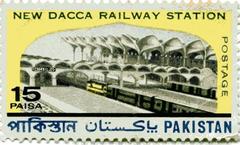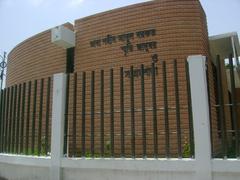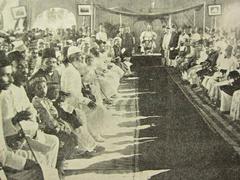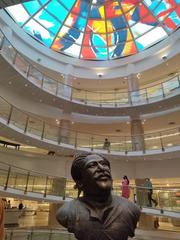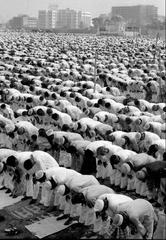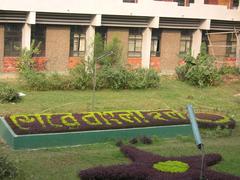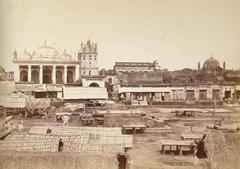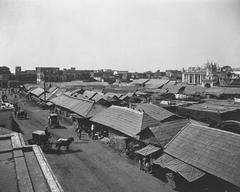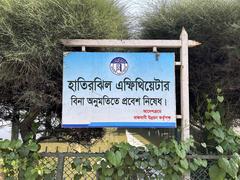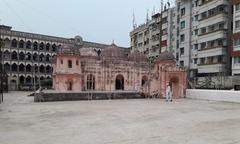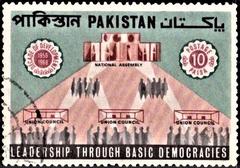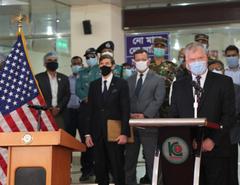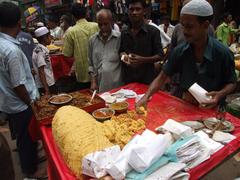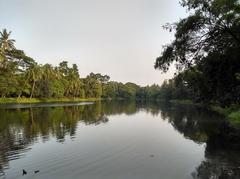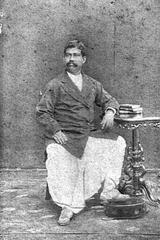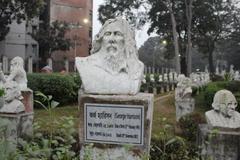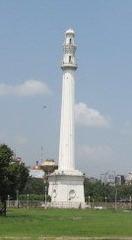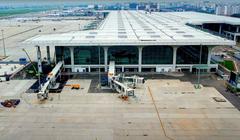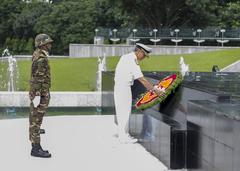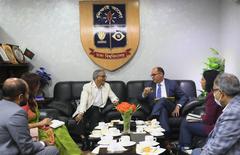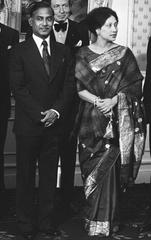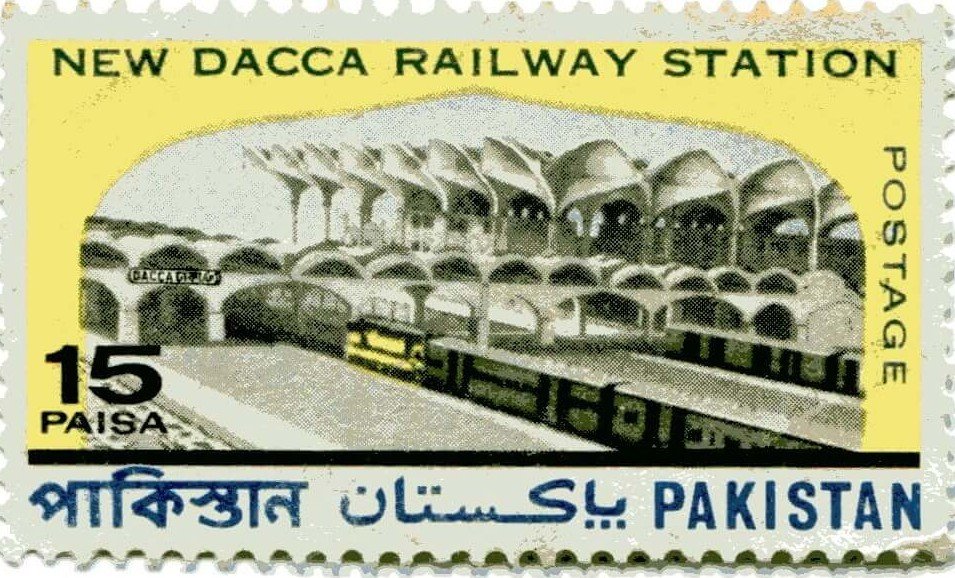
Kamalapur Railway Station Visiting Hours, Tickets, and Dhaka Historical Sites Guide
Date: 15/06/2025
Introduction
Kamalapur Railway Station stands as the largest and busiest railway terminal in Bangladesh and is a defining landmark of Dhaka. Renowned for its unique modernist architecture and pivotal role in connecting Dhaka to nearly every region of Bangladesh—as well as facilitating international travel to Kolkata, India—Kamalapur is both a transportation powerhouse and a symbol of the nation’s post-colonial aspirations. This detailed guide provides comprehensive information on visiting hours, ticketing, accessibility, nearby historical sites, travel tips, and cultural context to help travelers plan a seamless and enriching visit (The Daily Star; Parametric Architecture; bdnews24.com).
Table of Contents
- Historical Evolution of Kamalapur Railway Station
- Architectural Significance
- Visitor Information
- Preservation Challenges and Modernization
- Nearby Dhaka Historical Sites
- Travel Tips
- FAQ
- Summary & Conclusion
- References and Further Reading
Historical Evolution
Early Railway Development in East Bengal
The origins of Kamalapur Railway Station are rooted in the expansion of railways during British colonial rule. The first railway line in East Bengal opened in 1862, connecting Kolkata with Kushtia. However, Dhaka remained isolated from the main railway network for decades due to the region’s extensive river systems, which hindered economic and infrastructural integration (The Daily Star).
Urban Growth and the Need for a New Terminal
Following the Partition of 1947, Dhaka’s emergence as a provincial capital intensified urbanization and exposed the limitations of the centrally located Phulbaria station. Urban planners in 1948 recommended relocating the main station to Kamalapur, a less densely populated area, to unify the old and new parts of the city and improve traffic flow (The Daily Star).
Planning and Construction (1958–1968)
Construction of Kamalapur Railway Station began in 1961 after the government rerouted the railway line and selected Kamalapur as the new terminal site. The station was officially inaugurated on April 27, 1968, with its opening celebrated as a milestone of modern infrastructure in Dhaka (Parametric Architecture).
Architectural Significance
Modernist Vision and Design
Kamalapur Railway Station epitomizes the modernist architectural movement of the 1960s. Designed by American architects Daniel C. Dunham and Robert G. Boughey, the station’s iconic parabolic roof and open plan were unprecedented in South Asia. The architects combined modernist ideals with practical responses to the tropical climate, resulting in a structure that is both visually striking and functionally resilient (Parametric Architecture).
The Iconic Parabolic Roof
The most distinguishing feature is the parabolic, umbrella-like concrete shell canopy. Its rhythmic arches create a dramatic silhouette, sheltering platforms, ticket booths, administrative offices, and passenger waiting areas. The roof not only protects against monsoon rains but also unifies the entire station complex (The Daily Star).
Symbolism and Social Context
Kamalapur’s architecture is imbued with national symbolism. The white exterior signifies peace, while the red interior commemorates the sacrifices of the 1971 Liberation War. The station’s welcoming roof serves as a gateway for rural migrants and a nighttime refuge for the city’s less fortunate, reflecting Dhaka’s diverse social fabric (Ceramic Bangladesh).
Visitor Information
Visiting Hours
- Station Operations: Open 24/7 to accommodate passenger and freight movement.
- Ticket Counters: Generally open from 6:00 AM to 10:00 PM daily.
Ticketing
- On-site: Purchase tickets at any of the 21 ticket counters.
- Online: Use the Bangladesh Railway official website to buy tickets in advance, especially during holidays and peak seasons (yogsutra.com).
- Pricing: Fares vary by destination, train type, and class. Commuter trains are most affordable, while intercity and international services (e.g., Maitree Express to Kolkata) are higher priced and require advance booking and passport/visa checks.
Accessibility
- Facilities: Ramps and accessible pathways are available, but facilities may be limited during peak times.
- Support: Staff assistance can be requested for disabled passengers.
Amenities and Services
- Restrooms: Available but may lack cleanliness; bring personal hygiene items.
- Food: Multiple halal food stalls and street food vendors operate on-site.
- ATMs: Scarce inside the station—carry cash in small denominations.
- Security: Security personnel patrol the premises; remain vigilant for pickpockets.
- Prayer Rooms: Available for Muslim travelers.
Photographic and Cultural Exploration
- The station’s iconic architecture is a popular subject for photography, especially during morning and late afternoon light. While there are no formal guided tours, visitors are welcome to explore independently and capture the vibrant atmosphere (archpaper.com).
Preservation Challenges
Redevelopment and Heritage Debate
Recent urban development plans—such as the extension of Dhaka Metro Rail (Line-6) and proposals for a state-of-the-art multimodal transport hub—have sparked debate regarding the potential demolition or alteration of Kamalapur’s historic structure. Heritage advocates emphasize the need to preserve its architectural and cultural value (Parametric Architecture; bdnews24.com).
Modernization Initiatives
Planned upgrades include a 60-storey multipurpose building, underground metro and subway stations, and improved workshops and logistics. The goal is to balance heritage preservation with the demands of a rapidly growing metropolis (bdnews24.com).
Nearby Dhaka Historical Sites
Kamalapur Railway Station’s central location makes it ideal for exploring a host of Dhaka’s historical and cultural landmarks:
- National Museum: Offers extensive exhibits on Bangladesh’s history, art, and culture.
- Lalbagh Fort: A 17th-century Mughal fortress with gardens and museums (ToursnTripsBD).
- Ahsan Manzil (Pink Palace): Former Nawab residence and museum (ToursnTripsBD).
- Sadarghat Riverfront: Dhaka’s principal river port, bustling with boat activity (Royal Bengal Tours).
- National Parliament House: Architectural marvel designed by Louis Kahn, open for guided tours (Royal Bengal Tours).
- Sonargaon: Ancient capital with museums and artisan villages (Royal Bengal Tours).
- Ramna Park and Suhrawardy Udyan: Expansive urban green spaces (Travel Mate).
- Local Markets: New Market and Kawran Bazar for textiles, handicrafts, and street food (ToursnTripsBD).
Travel Tips
- Arrive Early: Plan to arrive 30–45 minutes before departure, especially during busy periods.
- Book Ahead: Use e-ticketing to secure seats for popular routes.
- Personal Essentials: Bring cash, tissues, sanitizer, and water.
- Safety: Stay alert to your surroundings and keep valuables secure.
- Dress Modestly: Respect local customs for a smooth cultural experience.
- Language: English is not widely spoken; having your destination written in Bangla is helpful.
- Transport Connections: Rickshaws, tuk-tuks, taxis, and ride-hailing apps (e.g., Uber) are available outside the station. Allow extra travel time due to Dhaka’s traffic (landofsize.com).
FAQ
Q: What are Kamalapur Railway Station’s visiting hours?
A: The station operates 24/7; ticket counters are open from 6:00 AM to 10:00 PM.
Q: How do I buy tickets?
A: Tickets are available at station counters and online via the Bangladesh Railway website.
Q: Is the station wheelchair accessible?
A: Basic facilities such as ramps are present, but assistance may be needed during crowded periods.
Q: What attractions are nearby?
A: Major sites include the National Museum, Lalbagh Fort, Ahsan Manzil, Sadarghat, and Sonargaon.
Q: Are there official guided tours?
A: No guided tours at the station itself, but some nearby sites offer them.
Summary & Conclusion
Kamalapur Railway Station is much more than Dhaka’s primary rail hub; it is a symbol of Bangladesh’s modernization, urban development, and cultural identity. Its modernist architecture and parabolic roof have inspired generations of architects and urban planners across South Asia (Parametric Architecture). Despite ongoing challenges such as overcrowding and redevelopment debates, Kamalapur remains a vital gateway to Dhaka’s history and a crossroads for millions of travelers each year.
With 24-hour operations, accessible ticketing, and proximity to many of Dhaka’s most important historical sites, Kamalapur offers both practical convenience and rich cultural immersion. By planning ahead and respecting local customs, visitors can make the most of their experience at this iconic landmark.
For real-time updates, ticket bookings, and more travel guides, download the Audiala app and follow us on social media.
Visuals and Media
For enhanced user experience and SEO, add high-quality images of the station’s architecture, ticket counters, and platforms, using descriptive alt tags such as “Kamalapur Railway Station tickets counter,” “Kamalapur Railway Station parabolic roof,” and “Dhaka historical sites map.” Including maps and links to virtual tours is also recommended for better planning and navigation.
Internal Links
References and Further Reading
- Quiet Masterpiece Serves Dhaka’s Gateway, 2017, The Daily Star (The Daily Star)
- Post-Colonial Architecture: 8 Notable Examples in South Asia, 2020, Parametric Architecture (Parametric Architecture)
- Kamalapur Railway Station Overview, 2023, bdquery.com (bdquery.com)
- Dhaka’s Multimodal Transport Hub Plans, 2023, bdnews24.com (bdnews24.com)
- Dhaka Demolishing Iconic Kamalapur Railway Station for Elevated Metro Line, 2021, The Architect’s Newspaper (archpaper.com)
- Kamalapur Railway Station Tourist Guide, 2024, yogsutra.com (yogsutra.com)
- Exploring Dhaka: Your Survival Guide, 2023, landofsize.com (landofsize.com)
- Kamalapur Railway Station Cultural Insights, 2023, Ceramic Bangladesh (Ceramic Bangladesh)
- What to See Around Dhaka, 2024, Royal Bengal Tours (Royal Bengal Tours)
- Top 10 Must-Visit Attractions for Dhaka Tourism in 2025, ToursnTripsBD (ToursnTripsBD)
- One Day Tour Packages, Travel Mate Bangladesh (Travel Mate)
